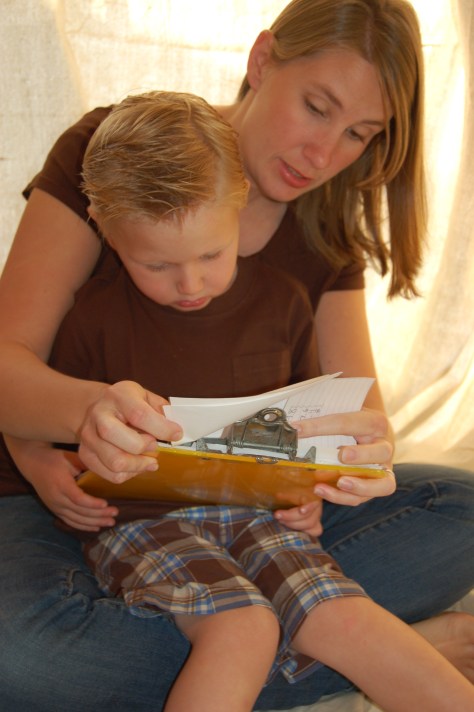
It is imperative that families learn to communicate. In my job as a teacher I find that effective communication is one of the best tools I have to mitigate problems. Occasionally I find that a student, a parent, another teacher or an administrator is upset about the way I have handled something. I find that if I am able to speak to the individual and explain my reasoning that problems can be avoided. We may not always agree, but we can usually come to an understanding. The ability to effectively communicate is an important skill in all areas of life and in all fields of business. Your child will learn communication patterns, good and bad, from you. It therefore behooves parents to learn and practice good communication techniques.
Communication techniques consist of verbal, non-verbal and written communication. Many of our communication patterns are learned in our families when we are children, and much of the ways we view and interpret the world hinges on the communication patterns we learned as children. Take some time to look at your communication patterns. Listen to what you say, how you say it and what your body language says. Ask your spouse what hidden messages you may be sending, and work on ways to communicate more clearly.
Teach your children to communicate with each other. In my home and my classroom I spend a large amount of time modeling and practicing communication techniques with my children and my students. If a negative exchanges breaks out between children I stop them, and walk them through good communication techniques. The main rule is that they must show respect for the other person. This includes listening when the other person talks, responding to their complaints and changing behavior if necessary.
It is important that not every family exchange be negative so be sure to build time into your family life for your family to regularly talk about what is going on in members’ lives. One of the best places to do this is at the family dinner table. Families should eat a meal together at least several times a week. This is a place for parents and children alike to talk about their day and share their likes and dislikes and opinions about things. It is easy for activities to creep in and take over this family time, but it is vitally important to family health and cohesiveness to provide this opportunity for your family. Also plan a time for regular family councils where the entire family can talk about and share their views on family issues.
As children get older it becomes more and more difficult to plan and protect family time. When our older children approached the teen years we began holding weekly family calendar meetings. I developed a weekly calendar with reoccurring events printed on the calendar. Each family member was assigned a different color of ink, so names did not need to be written, just events and times. (See Appendix F for an example.) We slipped the calendar into a sheet protector and used wet-erase markers to write changing events on the plastic. Each week our family meets together on Sundays to look at our calendar for the following week. I write events that will affect all or most of the family in black on the calendar, and then each family member tells me activities that they have planned for the week that are not on the recurring list. I use the colored markers to write each person’s upcoming events in their color of ink. The following week we erase the ink with a wet paper towel and the next week’s events are recorded. After all events are recorded we plan what days and times we will have dinner together, who needs rides where and when, what family jobs will need to be done around the house and yard and our next week’s calendar meeting. The calendar is then posted in our family communication center (see more about this in paragraph below) so that all can refer to it. All family members are responsible to know the information written on the calendar and are expected to be at scheduled events. Any new events should be cleared with parents and/or communicated to other family members involved.
One of the keys to good paper and pencil family communication is the communication center. The communication center can be any location in your home that has a place for paper, pencils and a bulletin board and is near a phone. You could also place phone books, office supplies and an incoming mail filing station in your communication center. It is helpful if the message center is near the entrance to the home that the family uses the most. Use the bulletin board to post your weekly calendar and other important papers that the family needs to have access to. The paper and pencil should be available (it should never leave the communication center, so tie it down if you must) for the family to take phone messages. One of the best communication tools that my family used in our communication center was a spiral notebook. We found that when children took phone messages on little slips of paper they tended to get misplaced. With a spiral notebook I could open the book and leave it available for all family communications. On one side of the notebook I could write notes for the kids on schedule changes or chores that they needed to do. On the other side the kids could leave phone messages. The pages were dated and used in order so that if information was needed on a phone message from some time in the past we could find and retrieve it. Everyone in the family was required to read the notebook daily so that we knew that everyone would have pertinent information.

One thought on “Chapter 9- Family Communication”